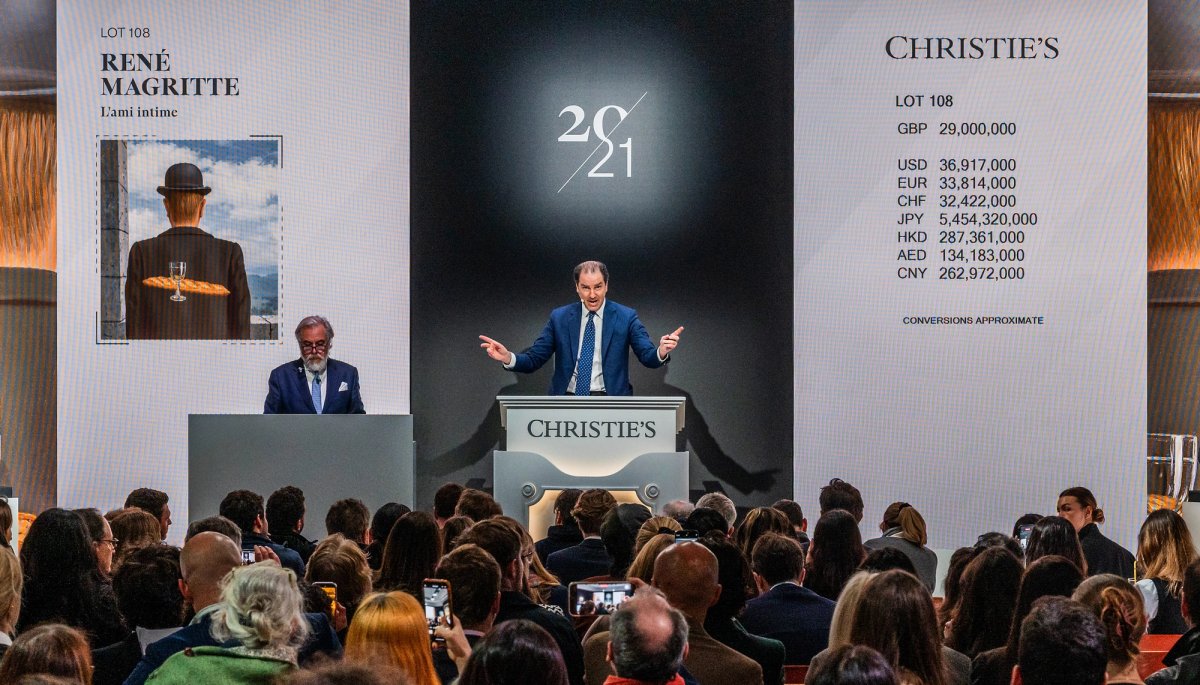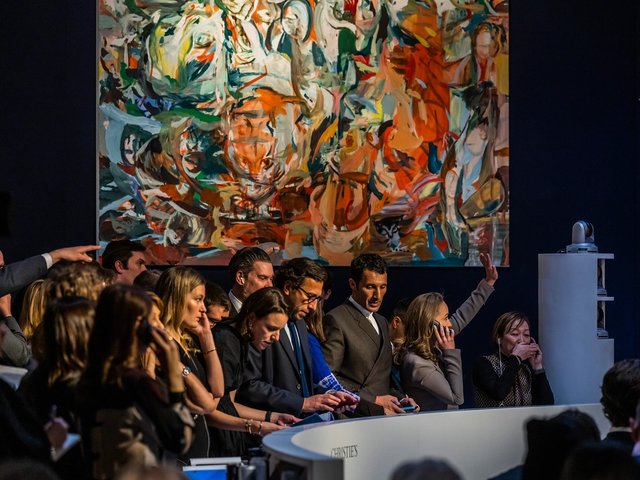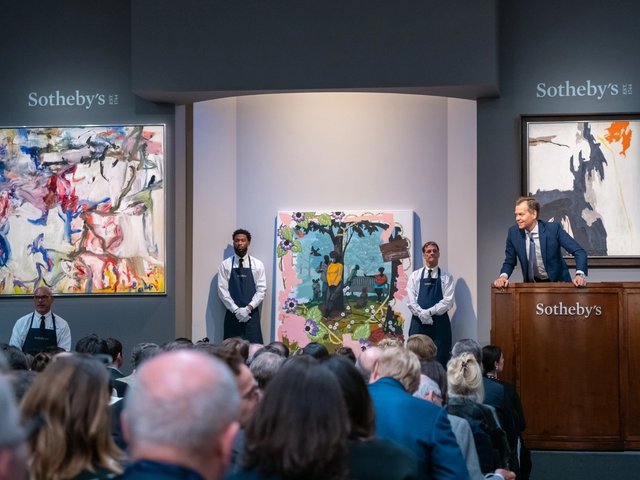The modest results of Christie’s back-to-back 20th/21st century and Art of the Surreal evening sales in London, held tonight (7 March), were the best that this week’s marquee spring auctions in the UK capital could muster. They followed a Phillips evening sale earlier today that just missed its £11m low estimate (all estimates are calculated without fees) and a Modern and contemporary evening auction at Sotheby’s the prior night that made 40% less than that house’s comparable sale in 2023.
Across Christie’s two auctions Thursday night, the house pulled in £163.3m (£196.7m with fees) from a combined 112 lots, squeezing into its pre-sale estimate range of £160.3m to £233.1m. The total splits out into £113.8m (£137.7m with fees) for the 20th/21st century sale, against a £112.3m to £157m estimate, and £49.5m (£59m with fees) for the Surrealist sale, against a £48m to £76.1m estimate.
Although the combined sales total represented an 18.5% increase by value from Christie’s equivalent evening auctions in London last March, it was still a 24.2% decrease from the 2022 iterations (which included 20 contemporary works sold from the house’s Shanghai saleroom), underscoring that the market is yet to fully return to its former heights.
The evening’s aggregate sell through rate was 86.7% by lot (though the figure drops to 81.2% if withdrawals are factored in). Around 25% of the works on offer carried guarantees. Seven lots were withdrawn from the 20th/21st century auction, including Francis Bacon’s Painting March 1985 (1985), last sold by Christie’s in Paris in 2013 and expected to fetch up to £6m tonight; no lots were withdrawn from the Surrealist sale.

René Magritte, L’ami intime (1968)
Courtesy of Christie's Images
Top performers
The Art of the Surreal auction, at 25 lots, comprised the evening’s shorter second component. Its promise of the evening’s most valuable work simultaneously proved true and anticlimactic. René Magritte’s L’ami intime (the intimate friend, 1968), from the collection of the late Gilbert Kaplan and his wife, Lena, hammered at £29m (£33.7m with fees), just shy of its £30m to £50m estimate range. The competition took less than two minutes, with the winning bid coming by phone via Giovanna Bertazzoni, the vice president of Christie’s 20th and 21st century department.
Other standouts in the Surreal section included Meret Oppenheim’s Tisch mit Vogelfüssen, a 1939 table whose legs resemble those of a tall bird. The work attracted spirited bidding from four clients and hammered for £420,000 (£529,200) against a £200,000 high estimate. A playful, fresh-to-auction painting by Victor Brauner—the second of two by the artist in this sale—made £170,000 (£214,200 with fees) against a £70,000 high target.
In the 20th/21st century sale, three lots with eight-figure estimates (all backed by third-party guarantees) helped to bump up tonight’s total and provide a much-needed sense of occasion. None of these sparked bidding wars, but each landed safely around its respective low estimate.
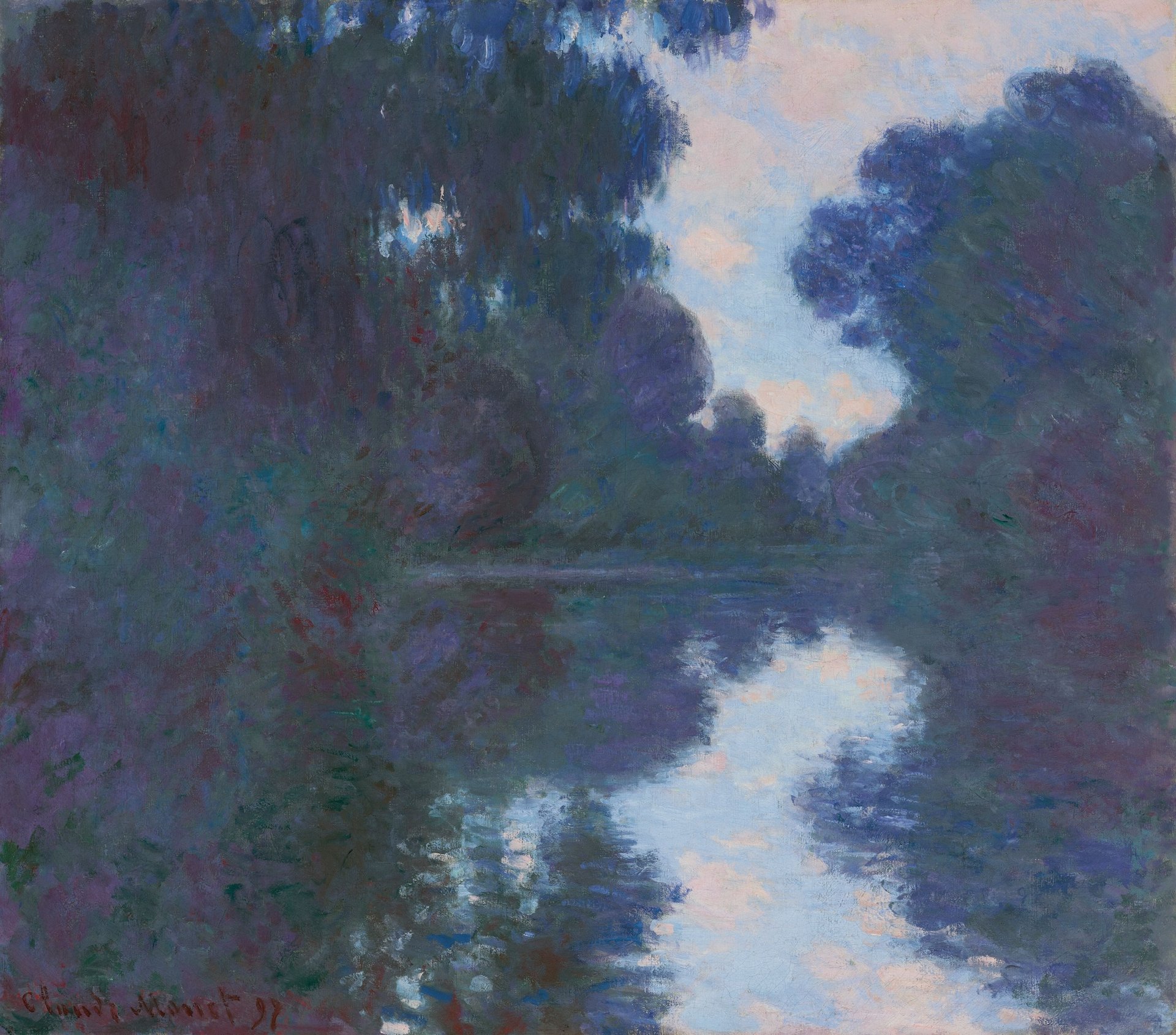
Claude Monet, Matinée sur la Seine, temps net (1897)
Courtesy of Christie's Images
First up was Monet’s Matinée sur la Seine, temps net (1897), last seen at auction in 1978. It almost plateaued at an £11.5m bid before crawling up in split bids, prompting Adrien Meyer, Christie’s global head of private sales, to dryly remark from the rostrum, “I guess £50,000 is still something”. The painting ultimately hammered at £12.25m (£14.4m with fees), tiptoeing into its £12m to £18m estimate window.
Two lots later, Francis Bacon’s Landscape near Malataba, Tangier (1963), acquired by the consignor from the London dealer Ivor Braka in 2000, made £16.8m (£19.6m with fees) against a £15m to £20m estimate, going to a bidder in the room.
The last of the three trophy lots was David Hockney’s never-before-auctioned California (1965), a sun-soaked pool scene with homo-erotic overtones and an unpublished £16m estimate. Bidding began at £10m and quickly shot up in £1m increments to reach £16m (£18.7m with fees), going to a phone bidder via Joseph Braka, a 27-year-old junior specialist and the son of Ivor Braka. (A Christie’s spokesperson declined to say whether he was bidding on behalf of his father.)
'Ultra-contemporary' works at a crossroads
The 20th/21st century sale was bookended by groupings of “ultra-contemporary” works, with those at the beginning performing markedly better than those at the end.
The opening lot set a new record for Allison Katz, as Snowglobe (2018) nearly quadrupled its £60,000 high estimate to make £220,000 (£277,200 with fees). Soon after, even greater fervour was generated by Jadé Fadojutimi’s The Woven Warped Garden of Ponder (2021), which attracted seven bidders and elicited the night’s longest tussle, at five minutes. The final price of £1.55m with fees (generated from a £1.25m hammer price) broke the 31-year-old Fadojutimi’s previous record of £1.4m, set just four months ago at Phillips in New York.
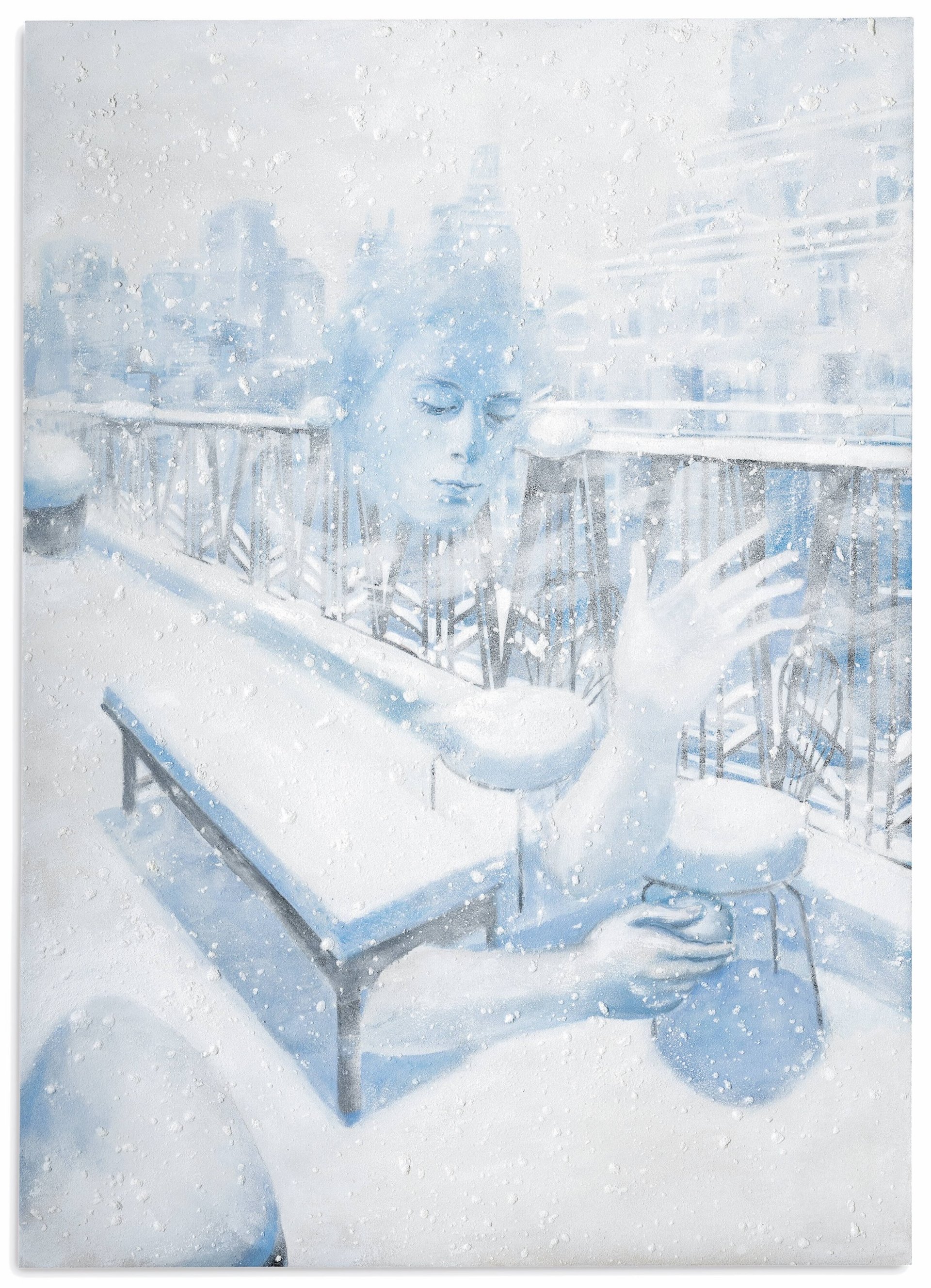
Allison Katz, Snowglobe (2018)
Courtesy of Christie's Images
Yet fast forward some 70-odd lots, and works by other fashionable painters in their thirties fell flat. A Julien Nguyen oil was passed against a £70,000 low target, and Lauren Quin’s Creak (2021) hammered at its £50,000 low estimate, making £63,000 with fees. Sahara Longe’s Afterparty (2021) was won on a bid equivalent to its £60,000 high estimate (£75,600 with fees), but it still came in considerably below the premium-inclusive £113,400 paid for a very similar painting by the artist at Christie’s in London in June 2023.
While a softening of the once-frenzied market for ultra-contemporary painting at auction has been observed for at least a year now, it is likely being exacerbated by shrinking waiting lists for coveted artists on the primary market. Tessa Lord, Christie’s head of evening auction, post-war and contemporary, describes this as “a fair observation” but caveats that “an important context is that a large number of contemporary works are integrated in the sale, so it is unsurprising when some outperform others”.
Speaking after the sale, Keith Gill, the head of Christie’s Impressionist and Modern art evening sale, was keen to peg tonight to its 2022 counterpart, as though last year was an anomaly. “Like in 2022, we focused on securing fresh-to-market masterpieces that could coalesce collectors in London. We did that with four works that made over £10m, including the £29m Magritte. That gives me confidence heading into the New York sales in May,” he said.
Following suit, one could take an overarching comparison of these sales to diagnose the upper-end of the market as such: better than last year, but not quite back to rude health.


